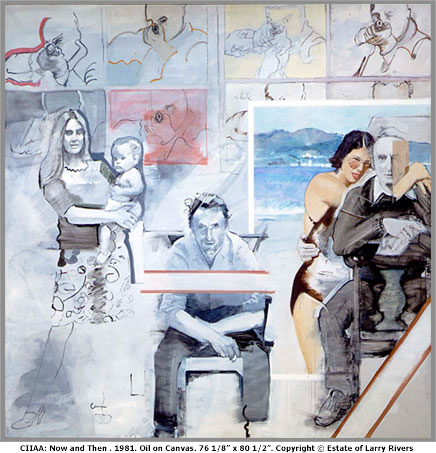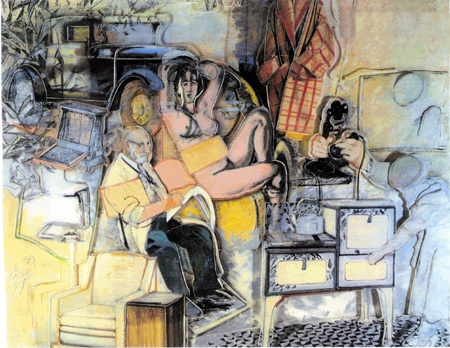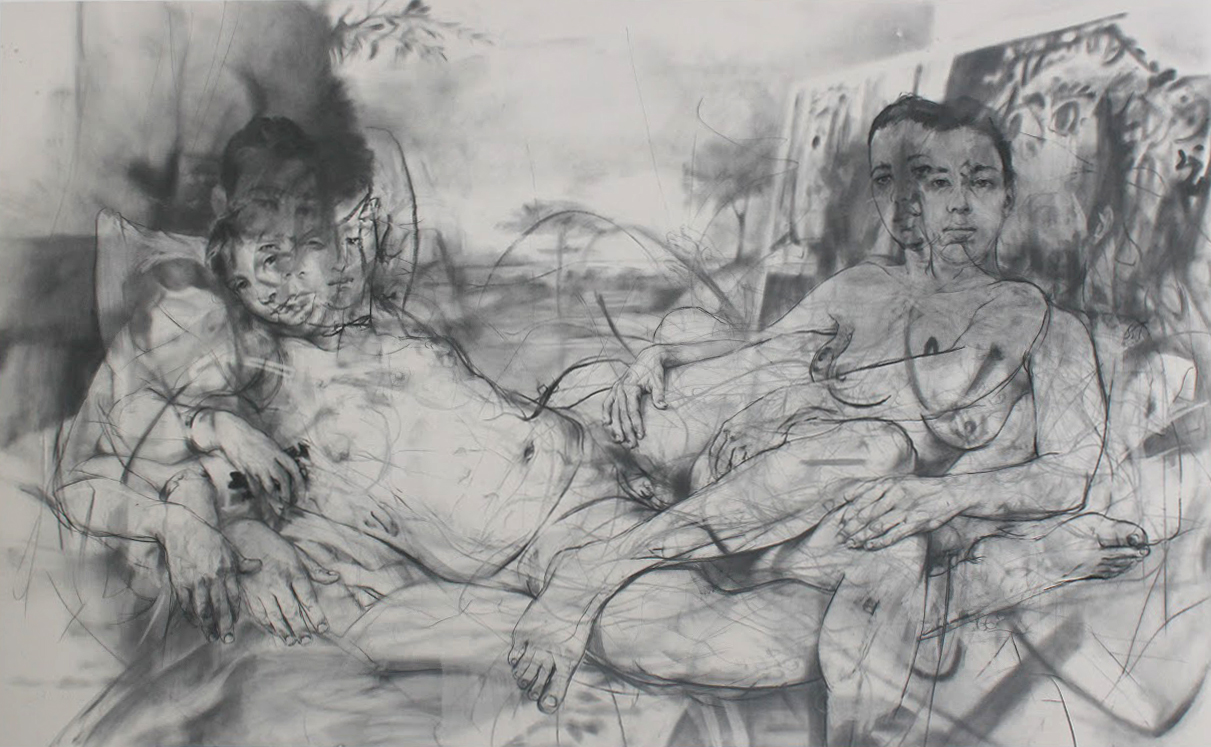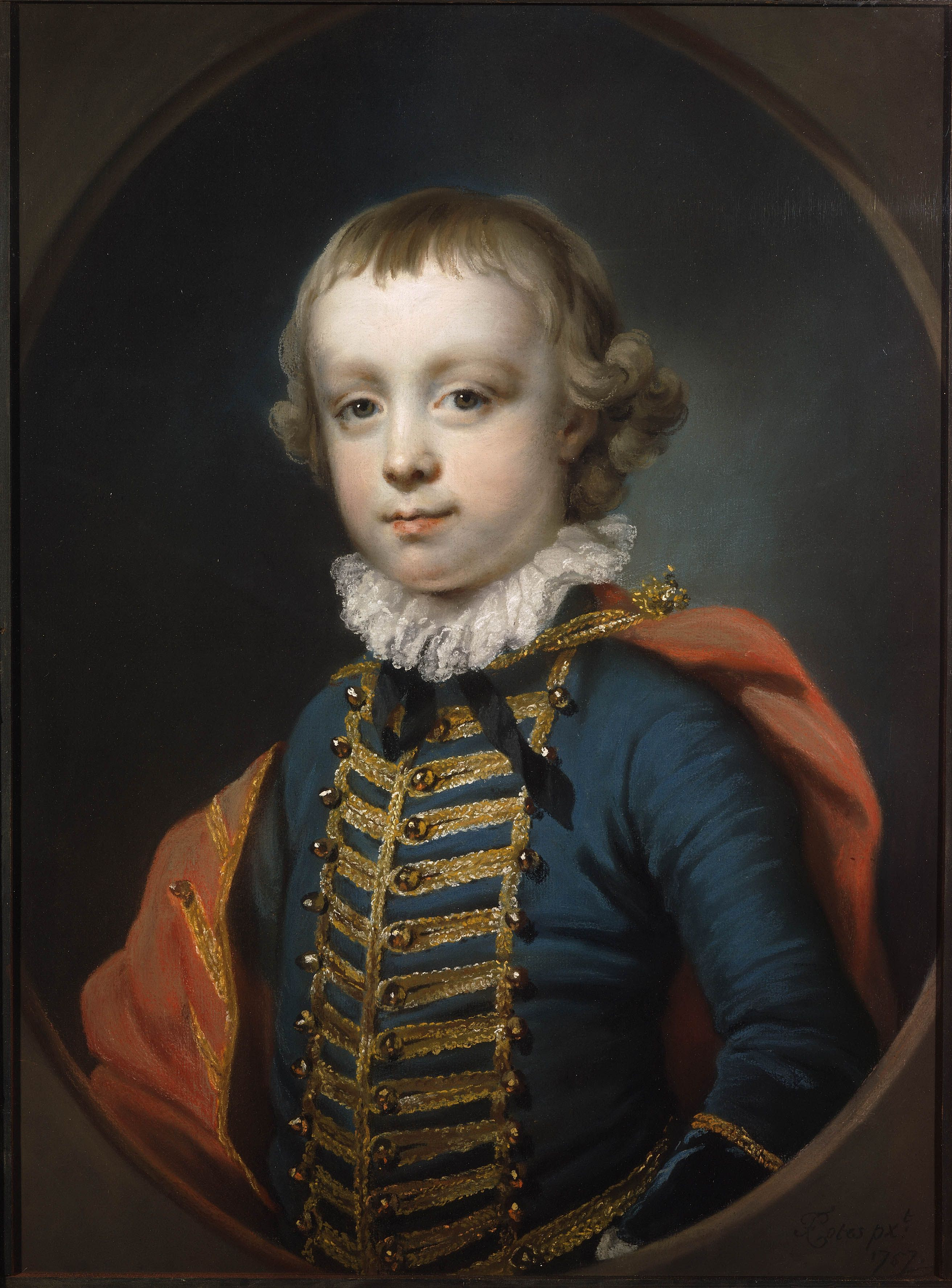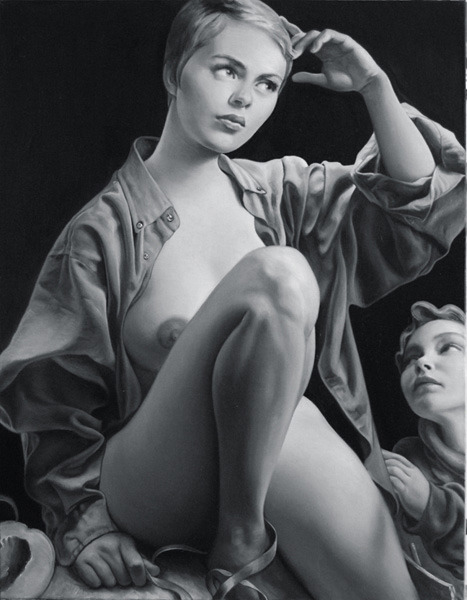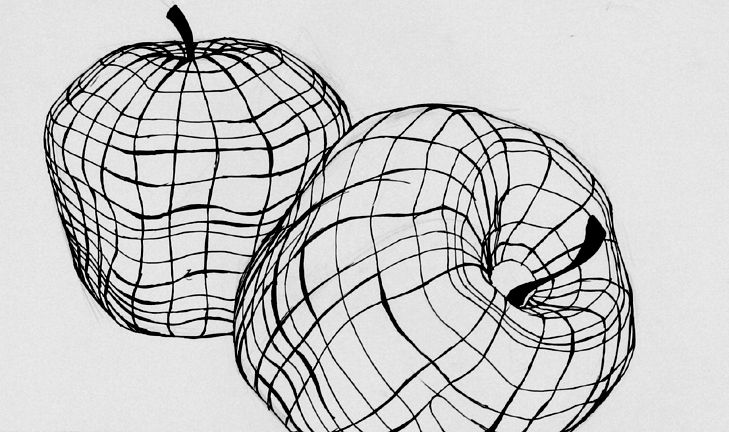Since you will be relying on a photo reference for your upcoming portrait project you will begin on Thursday, choosing a good photo source will make your life a good easier.
The following photos come from a webpage I found with some tips, but for sake of ease I am posting the pictures here for reference. You can see the link
here:
Over-exposed photo vs. under-exposed photo


Neither of these will be optimal. You lose information in the over-exposed photo in the light areas and are required to make up that anatomy, requiring a little more effort and knowledge.
The under-exposed photo loses all information in the dark passages leaving you the same problem.



In the above photographs you can see that the flat lit photo on the left does not provide a lot of shadows or form for you to work with. The center photograph shows a good range of values from darks to lights with plenty of midtones to help us understand the form.
Also, do not choose a tiny photograph, one that is over pixelated!
Also, if you are planning on appropriating images found online, consider some alternatives to just a simple google image search which often yields low quality images.
1) Flickr:
www.flickr.com
2) Morgue File:
http://www.morguefile.com/
